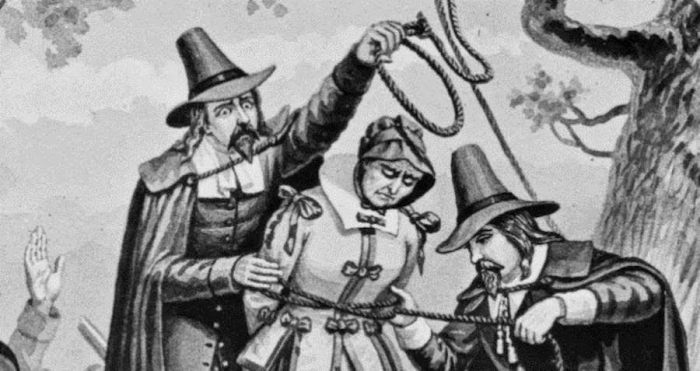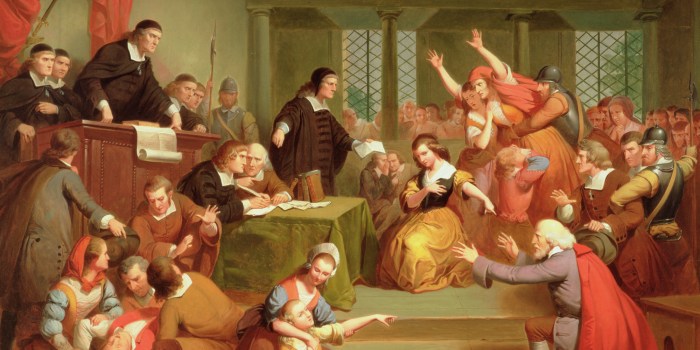In search of history the salem witch trials answer key – In Search of History’s Salem Witch Trials Answer Key delves into the enigmatic events that unfolded in Salem, Massachusetts, during the late 17th century. This captivating exploration unravels the socio-economic, religious, and societal factors that ignited the infamous witch hunts, leaving an enduring legacy on American history.
Through a meticulous examination of accusations, trials, and the disproportionate impact on marginalized groups, this comprehensive analysis provides a deeper understanding of the Salem Witch Trials and their far-reaching consequences.
Salem Witch Trials Historical Context

The Salem Witch Trials were a series of hearings and prosecutions of people accused of witchcraft in colonial Massachusetts between February 1692 and May 1693. The trials resulted in the executions of 20 people and the imprisonment of over 150 others.
The witch hunts were fueled by a combination of socio-economic and religious factors. The Salem community was experiencing a period of economic decline and social unrest. The Puritan beliefs of the community, which emphasized the importance of personal piety and the presence of evil in the world, also contributed to the witch hunts.
Accusations and Trials
The process of accusing and prosecuting individuals as witches in Salem was often arbitrary and unjust. Accusations were often based on rumor or superstition, and the evidence used to convict people was often flimsy.
One of the most common methods used to determine guilt was the “spectral evidence.” This involved having the accuser identify the accused in a dream or vision. Another method was the “touch test.” This involved having the accused touch the accuser, in the belief that the touch of a witch would cause the accuser to suffer physical pain.
The Role of Gender and Class
The Salem Witch Trials had a disproportionate impact on women and lower-class individuals. Of the 20 people who were executed, 14 were women. Women were often seen as more likely to be witches because they were believed to be more emotional and less rational than men.
Lower-class individuals were also more likely to be accused of witchcraft. This was because they were often seen as being outside the mainstream of society and therefore more likely to be involved in evil.
Impact on Salem and Beyond, In search of history the salem witch trials answer key
The Salem Witch Trials had a profound impact on the Salem community. The trials divided the community and led to a loss of trust and confidence. The trials also damaged the reputation of Salem and made it difficult for the community to attract new settlers.
The Salem Witch Trials also had a lasting impact on American history and society. The trials helped to shape the American legal system and the way that we think about justice and due process. The trials also raised questions about the role of religion in society and the dangers of mass hysteria.
Historiography and Contemporary Perspectives
The Salem Witch Trials have been the subject of much historiographical debate. Historians have debated the causes of the trials, the role of gender and class in the trials, and the impact of the trials on Salem and American society.
Contemporary perspectives on the Salem Witch Trials have been shaped by the rise of feminism and the civil rights movement. These perspectives have helped to shed light on the role of gender and class in the trials and the ways in which the trials can be seen as a reflection of the social and political tensions of the time.
FAQ Guide: In Search Of History The Salem Witch Trials Answer Key
What were the primary factors that contributed to the Salem Witch Trials?
Socio-economic disparities, religious fervor, and societal pressures, particularly within the Puritan community, played significant roles in fueling the witch hunts.
How were individuals accused and prosecuted as witches?
Accusations were often based on spectral evidence and hearsay. Trials relied on questionable methods of evidence gathering, including forced confessions and trials by ordeal.
Why were women and lower-class individuals disproportionately targeted during the witch hunts?
Women were perceived as more susceptible to the influence of the devil, while lower-class individuals lacked the social and economic power to defend themselves against accusations.

